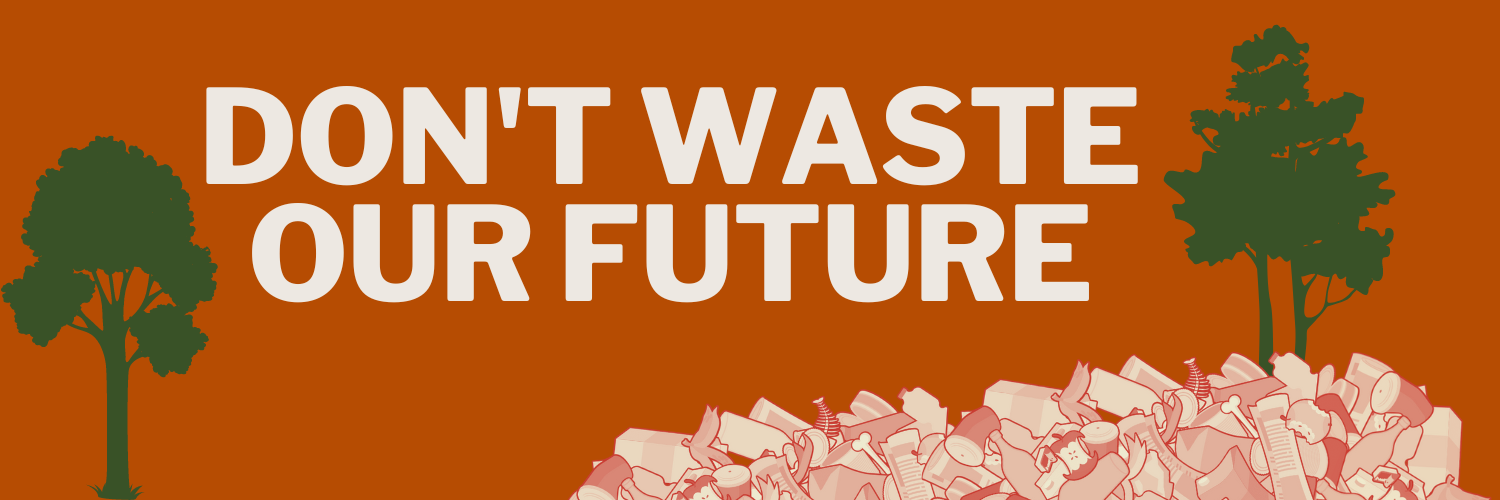
landfills are making coloradans sick
Tell our air regulators: protect our climate and our health
Colorado’s landfills are hidden drivers of the climate crisis, spewing unchecked amounts of planet-warming methane into the atmosphere each year. And methane doesn’t travel alone – it carries along a toxic cocktail of air and water pollutants like nitrogen oxides, sulfur dioxide, benzene, toluene, and volatile organic compounds (VOCs), all of which directly impact the health of those living nearby.
Landfill pollution impacts all of us — but it doesn’t impact us all equally. A deeply entrenched legacy of environmental racism and injustice means that Black and Indigenous people, people of color, and people with low household incomes are disproportionately likely to live in the shadow of a landfill or other highly polluting facility in the U.S.
More than 2.3 million Coloradans live within five miles of a landfill. Those living within this distance of a landfill face an increased risk of adverse health impacts. Coloradans with existing health conditions, children, and the elderly are also especially vulnerable to air pollution from landfills, which are associated with severe and chronic health conditions like asthma, organ damage, and cancer.
The health risks of landfills don’t stop there. Pollution from Colorado’s landfills is fueling an air quality crisis across the Front Range, which has been in violation of federal ozone standards for decades. Two pollutants from landfills — nitrogen oxides and volatile organic compounds (VOCs) — are key ingredients that combine in the sunlight to form ozone pollution, which can make it difficult to breathe and undermine long-term health. In 2024, monitoring stations around the Front Range recorded ozone concentrations well above EPA’s limits on 41 occasions, the highest number since 2021.
45% of Colorado’s landfills are located near communities where a disproportionate number of households are considered low-income.
61% of Colorado’s landfills are located near communities where a disproportionate number of residents are younger than five years old.
53% of Colorado’s landfills are located in areas where asthma rates are higher than the state average.
53% of Colorado’s landfills are located in areas where cancer or melanoma rates are higher than the state average.
84% of Colorado’s landfills are located in areas where public drinking water systems have reported violations for arsenic levels 1690 times in 2023, highlighting serious concerns about toxic exposure and the safety of local drinking water.
66% of Colorado’s landfills are in areas with nitrogen dioxide concentrations above the state average. Elevated NO₂‚ levels are linked to respiratory inflammation and chronic health issues.
CASE STUDY: TOWER LANDFILL IN COMMERCE CITY
The Tower Landfill sits just a short distance away from K-12 schools, parks, and childcare facilities. In 2023, the landfill reported emitting an estimated 153,601 million metric tons of carbon dioxide equivalent of methane — the climate impact of 25,804 cars on the road for a year. Those who live near the landfill are exposed to higher-than-average levels of harmful gases that can cause and exacerbate health harms. Of those who live in nearby communities*:
Approximately 69% identify as Black, Indigenous, or a person of color, compared to the state average of 32%.
More than 11,600 people are in the 90th percentile for benzene exposure nationwide.
More than 98,000 people are in the 90th percentile for ozone pollution exposure nationwide.
14,642 people are exposed to toxic releases (potentially including lead, mercury, or formaldehyde) in the 90th percentile statewide.
46,279 people are in the 90th percentile for exposure to nitrogen dioxide (NO2) statewide.
*We define “nearby communities” as the census tracts represented within a 5-mile radius of the landfill. In this instance, that 5-mile radius includes parts of Commerce City, Denver, and Aurora.
“Toxic air pollutants from the Tower Landfill are an immediate threat to the health of our community and environment. The landfill lies too close for comfort to newly built residential areas and centers of education. My heart hurts for young children living near this area who may face exposure to pollutants like Toluene and Benzene, which are linked to a range of serious health conditions. The developing lungs of a small child are significantly more vulnerable to pollutants released by landfills. Please implement common-sense standards, best-in-class cover practices, and stronger monitoring requirements.
”
CASE STUDY: larimer county landfill in fort collins
Located in one of Colorado’s most populous cities and adjacent to multiple parks and nature reserves, the Larimer County Landfill emits more methane than any other landfill in the state. In 2023, estimated emissions topped 680,000 million metric tons of carbon dioxide equivalent, the same climate impact as 158,902 cars on the road. In nearby communities*:
More than 25,700 people are in the 90th percentile for nitrogen dioxide exposure nationwide.
Public drinking water was flagged for an arsenic violation 62 times in one year.
Wastewater discharge levels rank in the 90th percentile or higher statewide, signaling a potential hotspot for water pollution and increased risk of exposure to contaminants from nearby industrial or municipal sources.
*We define “nearby communities” as the census tracts represented within a 5-mile radius of the landfill.
CASE STUDY: fountain landfill in foundation
Despite its proximity to elementary schools, parks, and childcare facilities, the Fountain Landfill is not required to report its annual estimated methane emissions to the U.S. EPA. This isn’t the only landfill that falls slips the the cracks due to regulatory loopholes; 37 of Colorado’s landfills don’t have to report emissions estimates. But a lack of data doesn’t mean all is well — it just makes methane and other more difficult to find and control. Meanwhile, the surrounding community is paying the price of unchecked pollution. Of those who live in nearby communities*:
More than 33,000 people are exposed to polluted drinking water, with the area seeing some of the highest number of drinking water violations in the country.
Nearly 50,000 people in the 90th percentile for lead compound exposure nationwide.
Nearly 6,700 people are exposed to ozone pollution at higher levels than 90% of the country.
More than 3,100 people are in the 90th percentile for exposure to lead, carcinogenic dioxins, and NO2 nationwide.
Wastewater discharge levels rank in the 90th percentile or higher statewide, signaling a potential hotspot for water pollution and increased risk of exposure to contaminants from nearby industrial or municipal sources.
*We define “nearby communities” as the census tracts represented within a 5-mile radius of the landfill.
Solutions
The Colorado Department of Public Health and Environment (CDPHE) has already begun the process of improving state rules for how landfill operators control for harmful air emissions, and draft updated rules are imminent. It’s critical that landfills across the state are held to high standards to protect our environment and communities, and Coloradans across the state have already made their voices heard. Learn more about Colorado’s opportunity to lead on landfill emissions reduction through practical, common-sense solutions.
CITATIONS
Industrious Labs’ analysis is based on data from the following sources:
EPA EJSCREEN 2023
U.S. Environmental Protection Agency (EPA). (2023). EJSCREEN: Environmental Justice Screening and Mapping Tool. Retrieved from https://www.epa.gov/ejscreen.currently recreated and hosted at https://dataverse.harvard.edu/dataset.xhtml?persistentId=doi:10.7910/DVN/RLR5AX
Used to assess environmental and demographic indicators within a 5-mile radius of landfills, identifying communities disproportionately impacted by pollution burdens and socioeconomic vulnerabilities.EPA Greenhouse Gas Reporting Program (GHGRP) 2023
U.S. Environmental Protection Agency (EPA). (2023). Greenhouse Gas Reporting Program: Landfill Emissions Data. Retrieved from https://www.epa.gov/ghgreportingEPA Landfill Methane Outreach Program (LMOP) 2023
U.S. Environmental Protection Agency (EPA). (2023). Landfill Methane Outreach Program Database: Landfill Points and Characteristics. Retrieved from https://www.epa.gov/lmop.
CDC PLACES (Local Health Indicators) 2023
Centers for Disease Control and Prevention (CDC). (2023). PLACES: Local Data for Better Health, 2023 Release. Retrieved fromhttps://www.cdc.gov/places.
Used to assess community health indicators within a 5-mile radius of landfills, including prevalence rates of respiratory illness, cardiovascular disease, and other conditions influenced by environmental factors.


